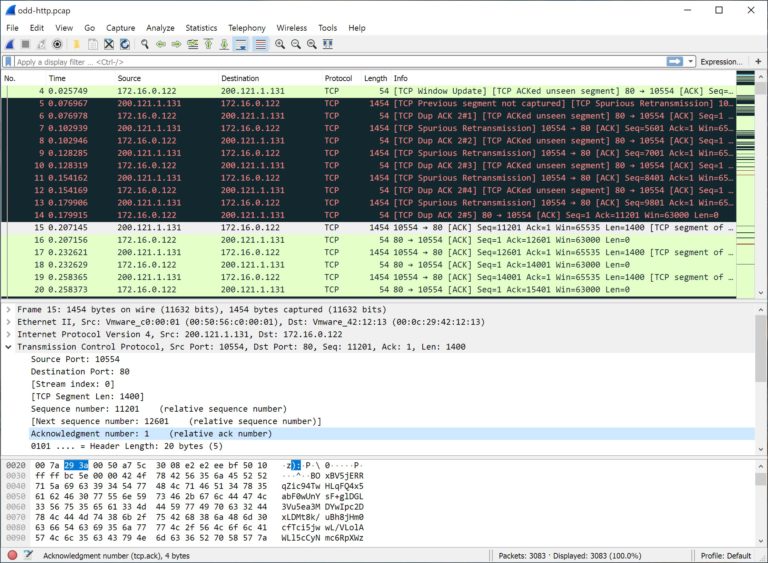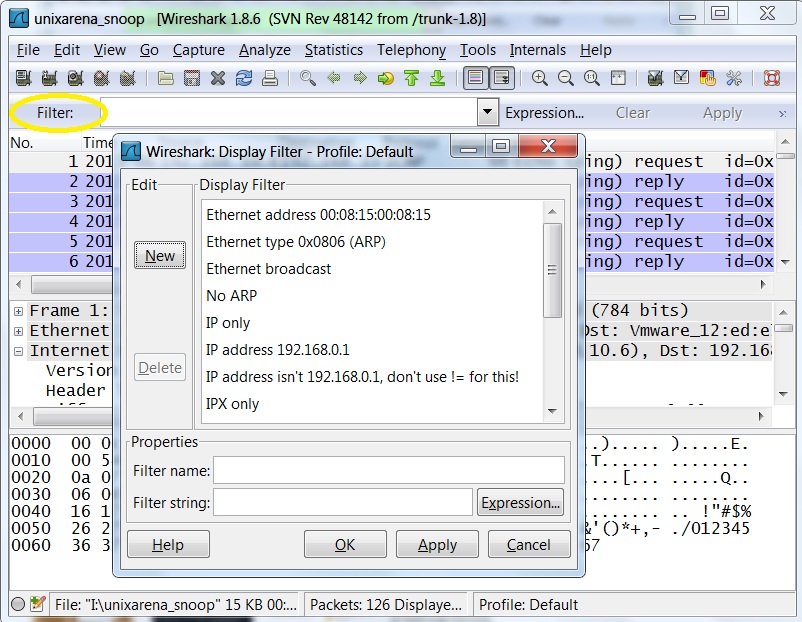

Ports are part of the TCP and UDP protocols. Please note, IP protocol operates with IP addresses, but does not operate with ports. If you need to filter traffic whose destination is a subnet, then use a filter of the form: If you need to filter out traffic whose source is the subnet, then use a filter of the form:įiltering traffic destined for sending to a specific IP range. You can specify a subnet instead of a single IP address:įiltering traffic sent from a specific IP range. Show traffic whose destination is the host with the IP address 138.201.81.199:įilter subnets and IP ranges in Wireshark Show traffic originated from the host with the IP address 138.201.81.199: According to the only possible situation, one of these addresses is the source, and the second is the destination address. Show traffic associated with these two IP addresses. Packets will be shown in which this IP address is the source of the data OR the recipient: Show traffic associated with a specific IP address (enter it instead of x.x.x.x). More precisely, it means IPv4 traffic, which is usually called just IP (Internet Protocol).

#WIRESHARK DESTINATION IP FILTER MAC#
Show IP traffic (this includes TCP, UDP, as well as application layer protocols DNS, HTTP - that is, almost everything except the data link layer protocols that do not use IP addresses for data transmission (in local Ethernet networks they use MAC addresses)): Show frames sent to device with MAC address 78:cd:8e:a6:73:be:Įth.dst = 78:cd:8e:a6:73:be Internet Layer Traffic Show frames (in general, all frames, not just ARP, as it was in the previous examples) sent from a device that has the MAC address 00:c0:ca:96:cf:cb: Show ARP protocol frames sent to the device having the IP address 192.168.50.1: Another popular address that can confuse you is ff:ff:ff:ff:ff:ff, this is broadcast address, that is, messages with this address are for all devices on the local network): Show ARP protocol frames sent to a device with a MAC address 00:00:00:00:00:00 (this address is used when the protocol tries to find out the target MAC address. Show ARP protocol frames sent from a device with an IP address 192.168.50.90: Show ARP protocol frames sent from device with MAC address 00:c0:ca:96:cf:cb: Show packets only sent or received on the wlan0 interface:įrame.interface_name = "wlan0" Link Layer Traffic Show all traffic except ARP, ICMP and DNS: For example, the filter !dns will show all packets except DNS.

That is, all packets will be shown, except those that satisfy the condition following the NOT. For example, the tcp.port=80 or tcp.port=8080 filter will show TCP packets that are related (are the source or destination) to port 80 or 8080.īoolean is NOT used when we want to exclude some packages. Logical OR, it is enough that only one condition is true if both are true, then this also fine. Only data matching both conditions will be displayed. For example, the ip.src=192.168.1.1 and tcp filter will show only packets that originate from 192.168.1.1 and which are associated with the TCP protocol.

Logical AND, data is output if they match to both parts of the filter. It is recommended to use brackets additionally, because otherwise you may not get the result you expect. Logical operators allow you to create detailed filters using several conditions at once. When using with = (equal), this bug is missing. For example, as here in an attempt to filter not one port, but the range of ports:īut actually the filter value (in this case, tcp.port) is overwritten by the last value, so as a result, instead of the expected behavior, we get the result of only the last part, in this case it is Consider them:Īs you can see, there are two versions, for example, if we want to indicate that the filter value is equal to something, then we can use = or eq.įilters using logical operands can be used to build rather complex structures, but apparently, usage of the same filter with comparison operators is buggy. For example, to show TCP packets containing the string hackware you need the following filter: If an inaccurate entry is sought (better suited for non-numeric values) then contains is used. Remember that in any case you can substitute your data, for example, change the port number to any one of your interest, and also do the same with the IP address, MAC address, time value, etc.įilters can have different values, for example, it can be a string, a hexadecimal format or a number. Some filters are written here in a general form, and some are made as literal examples. To fully understand the importance of filters and their meanings, it is necessary to understand how the network works. Here I consider the display filters that are entered in the main window of the program in the top field below the menu and icons of the main functions. Remember that Wireshark has display filters and capture filters.


 0 kommentar(er)
0 kommentar(er)
